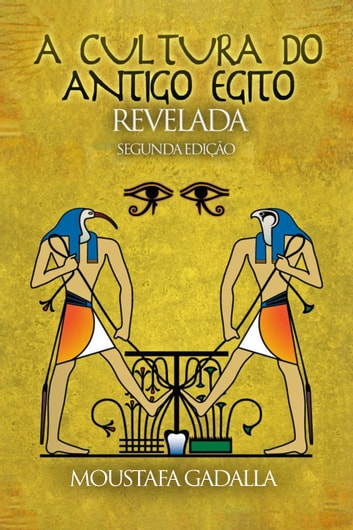O calendário egípcio perfeito
Now we turn our attention to finding the age of Egyptian antiquity by reviewing the Ancient Egyptian calendar.
The Egyptians’ advanced knowledge in astronomy, as reflected in their most accurate calendar, was acknowledged by the great Strabo (64 BCE–25 CE), who wrote:
They (the Egyptian priests) revealed to the Greeks the secrets of the full year, whom the latter ignored as with many other things…
Egypt’s ingenious (and very accurate) calendar was based on the observation and study of Sabt’s (Sirius) movements in the sky. The Ancient Egyptian calendar is therefore called the Sothic Calendar; i.e., of having to do with Sirius (Sabt), the Dog Star.
The Ancient Egyptians knew that the full year was slightly over 365¼ days. The earth takes 365.25636 days to complete one revolution around the sun.
It should be noted that the chronology of 3,000 years of Ancient Egyptian history, by modern Egyptologists, was made possible only because the Ancient Egyptians followed the accurate Sothic Year of 365.25636 days. Additionally, it is the Egyptian calendar that made it possible for history students worldwide to estimate the dates of events in all other countries in the world—countries that never had a correct (or any) calendar.
The practical Ancient Egyptians used a calendar consisting of 12 months, each equal to 30 days. The adjustments needed to make a complete year – i.e. the difference between 365.25636 days and the 360 (30 x 12) days – were made as follows:
- The difference of 5.25 days comes at the end of the Egyptian year, by adding 5 days every year and an additional day every 4 years. The Ancient Egyptian Year currently begins (in 2007) on 11 September. The 5/6 extra days begin on 6 September.
- The difference of 0.00636 day (365.25636 – 365¼ days) for each year requires adding another day every (1/0.00636) 157¼ years, which the Egyptians continued to do until our present times. This is accomplished by adding an extra day every 157, 314, 471, and 629 year cycles. The above adjustments by the Egyptians can clearly be seen in the last 2,000 years when comparing the Ancient Egyptian calendar with the “Latin” calendar [as explained below].
After Julius Caesar visited Egypt in 48 BCE, he commissioned the astronomer Sosigenes (from Alexandria) to introduce a calendar into the Roman Empire. This resulted in the Julian calendar of 365 days a year and 366 days every leap year. The Roman (Julian) calendar was literally tailored to be fit for a King. The first day of the year was coronation day for the Egyptian King at the end of the annual rejuvenation jubilee [See Místicos Egípcios: Buscadores do Caminho, by this same author, for more information].
However, the Latin calendar did not take into account that the year is a bit longer than 365¼ days. The difference between 365.25 days and 365.25636 days, from the time of the adoption of the Julian calendar to our present time, is 13 days. Such a difference explains the 13-day variation in the annual observations of numerous Christian festivals between the Orthodox and non-Orthodox churches. The reason is that one group followed the accurate Egyptian calendar, while the other group followed the inaccurate Julian calendar.
When the Latin calendar was adopted in 48 BCE, the first day of the Egyptian calendar was August 29. Now it is September 11—a difference of 13 days, which was just explained.
In order to find the beginning date of the Ancient Egyptian calendar (in terms of the (deficient) Latin calendar), we must account for the difference of 0.00636 day (365.25636 – 365.25 days) for each year between August 29 and June 21. June 21 signifies the summer solstice, which marks the beginning of the Ancient Egyptian calendar, which marks the beginning of the Sothic cycle. The Egyptian Sothic cycle began with the heliacal rising of Sabt (Sirius) on the horizon, together with the sun, and remained visible for a few moments until it faded with the advance of dawn.
We firstly find the difference between the August 29 and June 21 to be 69 days. By dividing 69 days by 0.00636, the result is 10,849 years. Thus, on August 29 of the year 48 BCE, the Egyptian calendar was at least 10,897 BCE (10,849 + 48).
Let us compare our Sothic calendrical calculations of 10,897 to the Zodiac calculations. As stated earlier, the present zodiac cycle began in 10,948 BCE. The difference between 10,897 BCE and the beginning of the Age of Leo [10,948 BCE] is 51 years. In other words, in 48 BCE, the Ancient Egyptian calendar was 1/3 through the cycle of a 157-year period.
The year 10,948 BCE, being the beginning of the Age of Leo, is consistent with the statements of all early Greek and Roman writers such as Plato, whose Diálogos coletados indicate that the Ancient Egyptian canon of proportion for arts and architecture did not change over the previous 10,000 years before Plato’s time [428–347 BCE]. Plato stated:
That the pictures and statues made ten thousand years ago, are in no one particular better or worse than what they now make.
Since the Islamic/Arab occupation of Egypt [641 CE], the Ancient Egyptian calendar became known as the “Coptic” calendar, even though it was developed thousands of years before Christianity. Modern-day Egyptians still follow the Ancient Egyptian calendar for practically all the countless annual festivals, agriculture, weather, and other matters (with just a handful of exceptions). It is by far the most practical and accurate calendar in use in the world.
[Um trecho de Antigo Egípcio: Cultura Revelada, Segunda Edição por Moustafa Gadalla]
https://egyptianwisdomcenter.org/product/a-cultura-do-antigo-egito-revelada/
